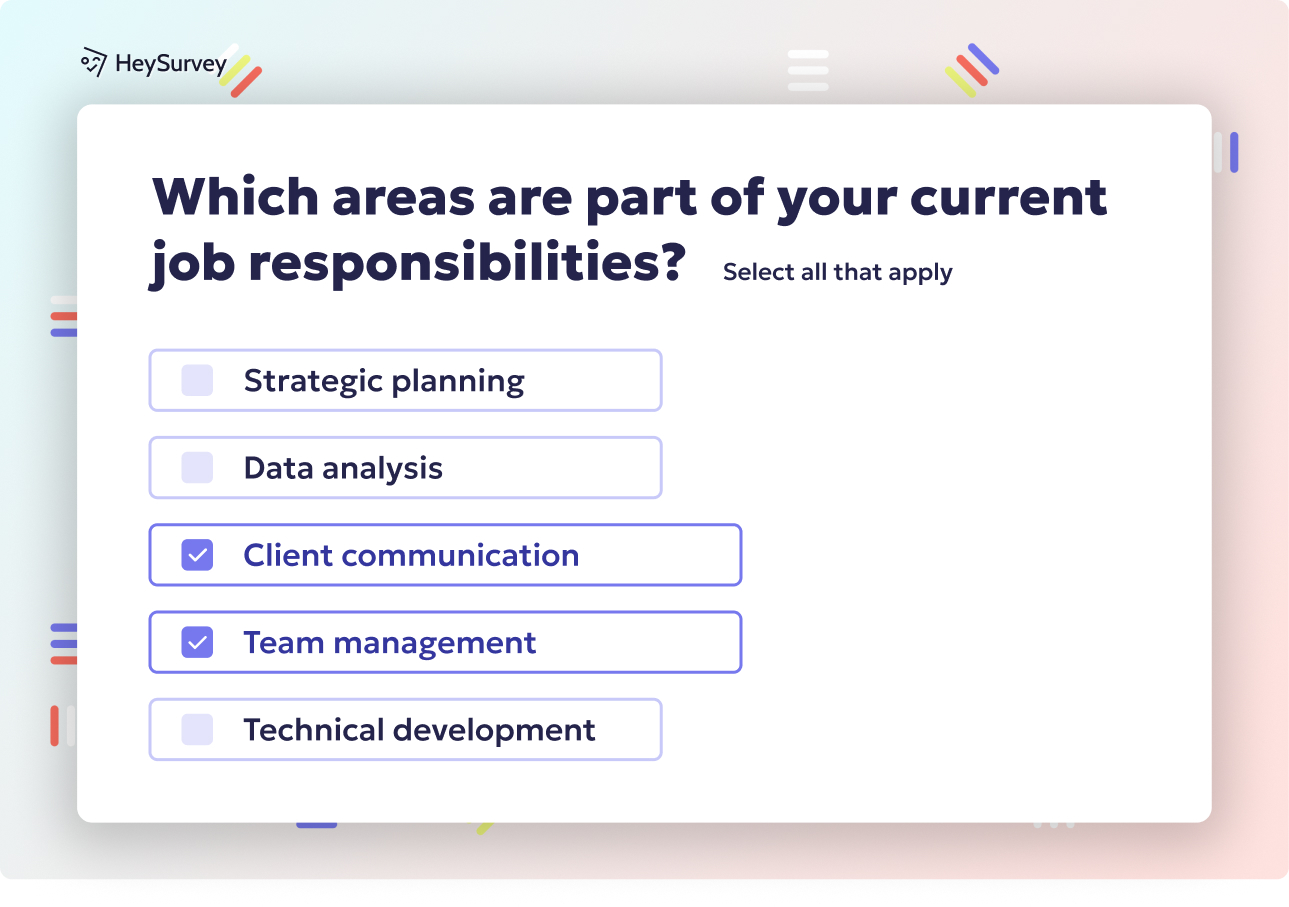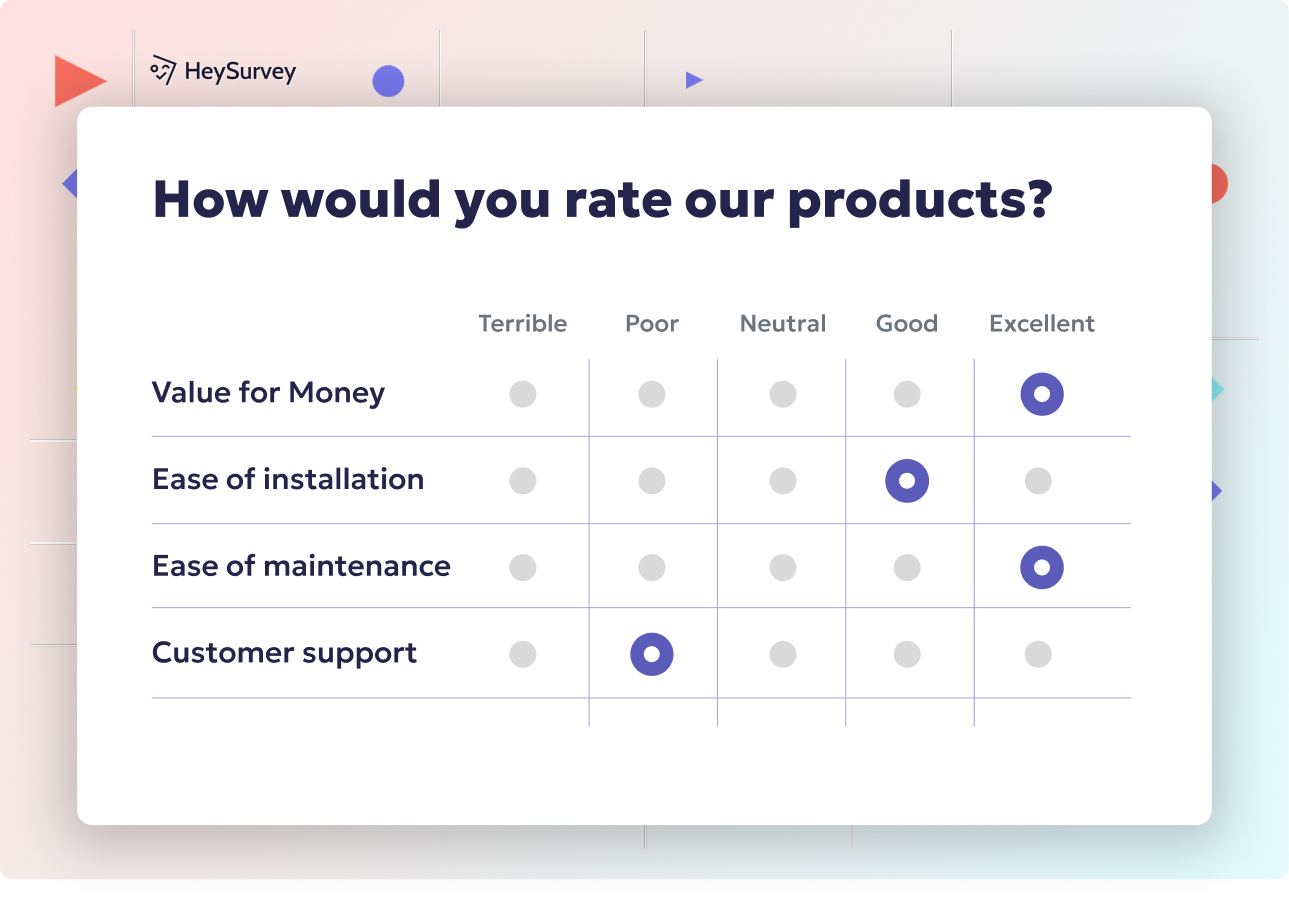31 Great Place to Work Survey Questions PDF: Ultimate Guide
Discover 30 expert great place to work survey questions PDF with sample queries across engagement, culture, leadership, DEI, and more.
When it comes to measuring what makes an organization truly a great place to work, it’s impossible to overstate the impact of thoughtful surveys. A Great Place to Work (GPTW) survey isn’t just another employee-feedback tool—it's a mirror reflecting the vibrant (or sometimes not-so-vibrant) soul of your company. These custom-crafted questionnaires dive deep into engagement, trust, culture, retention, and even employer branding. And let’s not forget the beauty of delivering these surveys in PDF: uniform design, offline access, easy archiving, and flawless print-outs. Whether you’re searching for a “great place to work survey questions PDF,” a “downloadable employee engagement questionnaire,” or a “workplace culture survey template,” you’re about to unlock the complete guide.
Employee Engagement Survey
Why & When to Use
Organizations thrive on employee engagement—it’s the spark behind productivity, innovation, and long-term growth. You’ll want to use these surveys quarterly or at least bi-annually, especially if you sense motivation waning or see turnover inching up. It’s your chance to catch disengagement before it becomes a wildfire.
High engagement links directly to lower absenteeism and higher performance. Companies facing stagnant productivity, a dip in morale, or the dreaded “I could be doing this somewhere else” chatter need to act quickly. Use this survey to track the pulse and stop potential exits before they happen.
Before launching your survey, plan how you’ll use the results:
- Identify key drivers of motivation.
- Recognize high-impact areas for change.
- Compare scores across teams or time periods for trend-spotting.
5 High-Impact Sample Questions
I feel proud to tell others I work for this company. (Strongly Disagree–Strongly Agree)
I understand how my work contributes to our organizational goals.
I regularly receive recognition for doing good work.
I would recommend this company as a great place to work.
In the last six months, I have seen professional growth opportunities here.
When building your own employee engagement questionnaire, always use consistent response scales (like 5-point Likert options), which make data easy to analyze and compare. Benchmark your results against industry standards for a fuller picture or use historical scores as your own baseline. This way, you can see progress (or warning lights) at a glance.
Research indicates that well-designed employee engagement surveys, when followed by actionable steps, significantly enhance workforce productivity and morale. (researchgate.net)
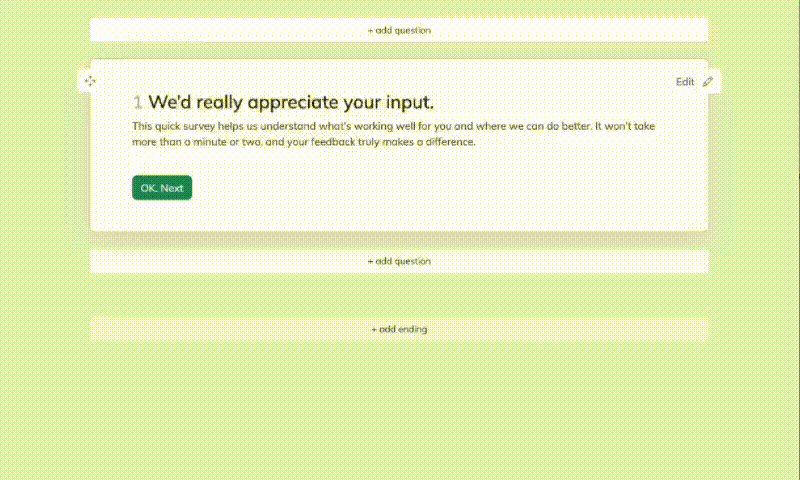
How to Create Your Great Place to Work Survey with HeySurvey in 3 Easy Steps
Ready to build your very own Great Place to Work survey using HeySurvey? If you’re new to the platform, no worries! Here’s a simple, straightforward guide to get you started quickly. After the steps, you can jump right into your survey template by clicking the button below.
Step 1: Create a New Survey
- Head over to HeySurvey and log in or create a free account if you want to publish and track responses.
- Click the button to start a new survey.
- Pick a method: either start from scratch with an Empty Sheet, choose a Pre-built Template (perfect for GPTW surveys), or type in your questions and let HeySurvey format them for you.
- Once you select a method, your survey opens in the Survey Editor — this is your playground where you can customize everything from the title to the flow.
Step 2: Add Your Questions
- Click Add Question anywhere you want to include a new item.
- Choose the right question type for your needs: Likert scales for engagement, multiple choice for benefits, or open text for deeper cultural insights.
- Enter your question text and add descriptions or instructions if needed.
- Mark questions as required if you want to ensure answers for crucial areas.
- Use branching settings to direct respondents to different questions based on their answers, personalizing the survey experience.
- Duplicate questions you like to save time when similar items are needed.
Step 3: Publish Your Survey
- When you’re happy with your questions and design, hit Preview to see what respondents will experience.
- Make any tweaks needed directly in the preview mode.
- Click Publish to generate a shareable link or embed code.
- Send this link to your team or post it where employees can easily access it.
- Remember: only published surveys collect responses, and you’ll need an account to view these results.
Bonus Steps to Make Your Survey Truly Shine
- Apply Branding: Upload your logo to the survey header and customize colors and fonts using the Designer Sidebar. This creates a polished, professional look that feels like “your” survey.
- Define Settings: Set start/end dates, add response limits, or add a redirect URL for after completion. Control who sees the results and configure notifications.
- Use Branching & Endings: Craft smart question paths letting different respondents see relevant items. Add personalized endings with custom messages or images to leave a great last impression.
Now you’re ready to create, customize, and share your Great Place to Work survey with confidence. When you’re set, just click the button below to open a pre-designed template and start collecting insights today!
Workplace Culture & Values Survey
Why & When to Use
Company culture isn’t just an HR buzzword—it’s the heartbeat of your workplace. Culture and values surveys are especially vital after mergers, hyper-growth, or leadership shake-ups. When the sands shift, employees want to know if the values plastered on your walls match what’s happening on the ground.
The best time to deploy this questionnaire is during or immediately after major changes. It gives you a crucial opportunity to listen to your team and correct course if necessary. In moments of big transition, alignment matters more than ever. You don’t want a divided ship sailing through stormy seas.
Here’s why every organization needs culture check-ins:
- Ensure your stated values guide daily behaviors.
- Spot fractures between new and established teams.
- Encourage open conversation about what culture truly means.
5 Sample Questions
Our core values guide my day-to-day decisions.
People here are treated with respect, regardless of position.
Mistakes are viewed as learning opportunities, not failures.
Our culture supports innovation and risk-taking.
I feel a sense of belonging at this organization.
For deeper insights, pair these Likert-scale items with one open-ended prompt like, “What is one thing that would improve our culture?” Open-ended questions let people elaborate—so don’t be surprised if a few hidden gems (or red flags) pop up.
Implementing employee surveys that assess trust, respect, fairness, pride, and camaraderie can significantly enhance workplace culture and employee satisfaction. (fortune.com)
Leadership & Management Effectiveness Survey
Why & When to Use
Strong leadership shapes emotional safety, clarity, and trust at every level. The leadership feedback questionnaire stands apart for its focus on communication, fairness, and authenticity. Use it once a year, or after introducing big leadership initiatives, to check if your leaders walk their talk.
Deploy this survey a few months after any new leadership training or structural changes. Don’t wait until you see issues; regular feedback allows course corrections that keep teams thriving. When employees trust their managers, they’re more engaged and more likely to stay.
With a manager performance survey in hand, you’ll quickly uncover:
- Whether your leadership vision is cutting through.
- If feedback is consistent and actionable.
- Where your decision-making processes may lack transparency.
5 Sample Questions
Leadership communicates a clear vision for the future.
My manager provides regular, actionable feedback.
Leaders act in accordance with our stated values.
I trust senior leadership to make the right decisions.
Decision-making processes are transparent in my department.
Don’t forget to analyze results by department or leader—patterns often appear in the details. These insights can guide coaching, succession planning, and leadership development programs, ensuring everyone has the support they need to excel.
Benefits, Compensation & Recognition Survey
Why & When to Use
People don’t just show up for a paycheck—they want to feel valued in diverse ways. The benefits, compensation, and recognition survey is your go-to for understanding what motivates your team—and where your rewards may be missing the mark. Deploy it when revising your total rewards strategy or if you notice those employee perks you’re so proud of aren’t getting much love.
If usage rates for benefits are low or concerns about pay equity pop up, it’s a signal to act. This survey helps you craft packages that not only attract talent but keep your best people around for the long haul.
Focus your analysis by:
- Segmenting results by demographic groups to spot any equity gaps.
- Comparing perceived value of monetary and non-monetary recognition.
- Tracking satisfaction with communication around pay and benefits.
5 Sample Questions
I believe my total compensation is fair for the work I do.
Our benefits package meets my personal and family needs.
Non-monetary recognition is meaningful in this organization.
I understand how merit increases and bonuses are determined.
I know where to access information about my benefits.
Adding demographic filters to your feedback forms allows you to check equity across teams, roles, and locations. Small tweaks in your benefits communications or recognition programs can have outsized impacts on satisfaction.
A study found that 36.2% of employees consider compensation and benefits highly important to job satisfaction, yet many would leave for better benefits. (proquest.com)
Diversity, Equity & Inclusion (DEI) Survey
Why & When to Use
No team can succeed long-term without real diversity, equity, and inclusion. The DEI survey is your accountability checkpoint—run it yearly or after launching any major DEI effort to see if you’re making actual progress (and not just writing nice-sounding policies).
Use this survey to examine if everyone has real, not just theoretical, opportunities. It will highlight inclusivity in leadership, hiring, promotions, and day-to-day behaviors. Employees are more likely to stay and advocate for your company if they feel welcome and heard.
Key benefits of the DEI survey:
- Track year-over-year improvement toward representation goals.
- Pinpoint development gaps and guide targeted learning programs.
- Foster psychological safety so everyone can thrive.
5 Sample Questions
I feel comfortable being my authentic self at work.
People from diverse backgrounds have equal growth opportunities here.
Management visibly supports DEI efforts.
I have witnessed inclusive behaviors from my teammates.
The organization effectively addresses discriminatory incidents.
Encourage anonymous comments for these sensitive topics. Giving people a secure channel to raise concerns helps build trust and can surface issues that might otherwise be missed in checkbox-only formats.
Wellness & Work-Life Balance Survey
Why & When to Use
Burnout isn’t a badge of honor. The wellness and work-life balance survey is essential during periods of heavy workloads, organizational upheaval, or global challenge (pandemics, we’re looking at you!). Supporting your team’s wellbeing isn’t just nice—it’s strategic.
Use this pulse-check to gauge whether employees feel stretched too thin or well-supported. If people aren’t taking time off or frequently seem at wit's end, it’s time for a reality check. Healthy, happy team members do their best work (without needing heroics).
Deploy this survey to:
- Identify hidden stress hotspots.
- Evaluate the effectiveness of wellness initiatives.
- Shape flexible policies that support both work and personal commitments.
5 Sample Questions
My workload is manageable within my regular working hours.
I have flexibility to balance my work and personal life.
I feel the company supports my mental-health needs.
I take adequate breaks/vacation without negative repercussions.
I am aware of the wellness resources available to me.
Include open-text options to let employees share what’s working—and what’s making their hair stand on end. Nuanced stressors are often hidden in those extra comments, so listen closely.
Remote & Hybrid Work Experience Survey
Why & When to Use
Remote and hybrid work are here to stay—and so is the need to make those arrangements habitable, productive, and inclusive for everyone. Deploy this survey after rolling out remote or hybrid schedules, or as your “new normal” evolves.
Ask these questions anytime you sense friction with technology, communication, or team belonging. The shift to flexible work requires thoughtful feedback loops—there’s no one-size-fits-all formula, but there are clues everywhere if you ask the right way.
You’ll want to uncover:
- Gaps in tech tools and connectivity.
- Ways to boost virtual teamwork and trust.
- Whether remote policies are applied consistently and fairly.
5 Sample Questions
I have the technology and tools needed to work remotely.
Team communication is seamless regardless of location.
Remote work policies are applied consistently and fairly.
I feel connected to my coworkers when working remotely.
I am as productive at home as in the office.
Including these questions in a hybrid workplace feedback form ensures you’re not missing out on key concerns—before they evolve from a trickle into a torrent.
Best Practices & Dos and Don’ts for Crafting Your GPTW Survey PDF
Designing the perfect survey PDF is a blend of art and science. Here’s how to keep your form friendly, functional, and fuss-free:
Do:
- Keep language clear, neutral, and jargon-free for wider understanding.
- Limit total questions to 45 or fewer to respect attention spans.
- Pilot test your survey with a sample group before rolling out company-wide.
- Anonymize all responses to build trust and drive honest feedback.
- Always provide a follow-up action plan post-survey—action beats apology!
Don’t:
- Use loaded or biased phrases that nudge people toward a certain answer.
- Collect personally identifiable data unless absolutely necessary.
- Drag your feet on sharing survey results—speed fuels trust.
- Skip open-ended prompts; real insights lurk in the unprompted comments.
For formatting, technical mastery matters:
- Use accessible fonts and high-contrast colors to support all users.
- Employ clear hierarchical headings for easy navigation.
- Add interactive checkboxes for digital completion.
- Compress file size so the PDF sails effortlessly through inbox filters.
When your survey tool belt is set, link to supporting articles like how to analyze employee survey data or best communication strategies. This provides extra guidance for readers eager to dive deeper.
Conclusion – From Survey Draft to Actionable PDF
A well-crafted Great Place to Work survey—especially as a downloadable and polished PDF—is more than a feedback form: it’s a lever for change. Tailored questions unlock honest, actionable insights and foster a culture of trust.
First, pick the right survey type. Next, adjust questions for your audience. Pilot, brand, and export to a readable PDF. After distribution, act on what you learn and close the loop clearly with employees.
Grab your free Great Place to Work Survey Questions PDF template now, and subscribe for more practical HR goodness, straight to your inbox!
Related Employee Survey Surveys

29 Essential Post Mortem Survey Questions for Project Success
Discover 25+ essential post mortem survey questions to improve projects, boost team morale, and d...
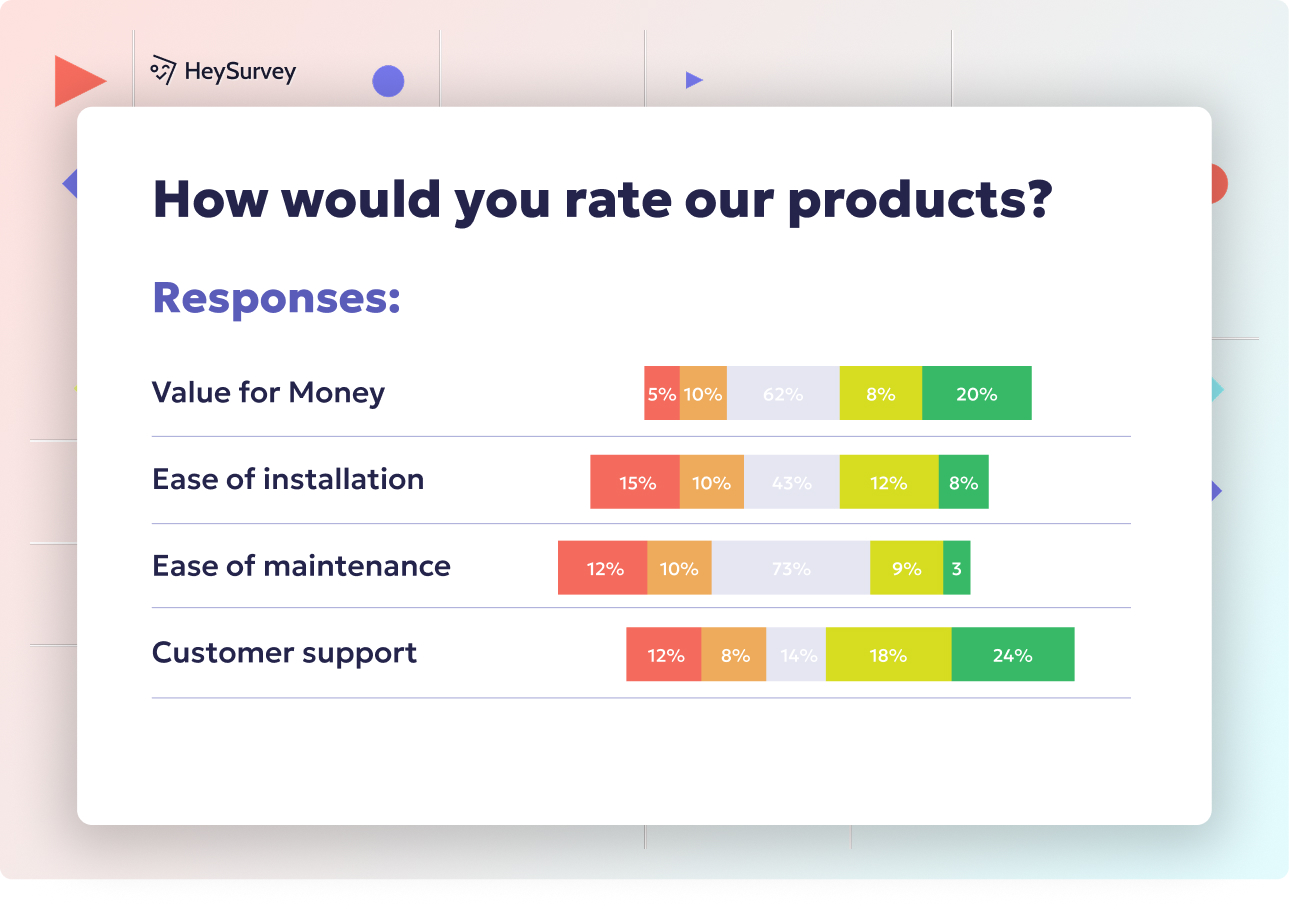
31 Change Readiness Survey Questions to Boost Your Success
Discover 25+ sample change readiness survey questions to assess attitudes, barriers, and confiden...
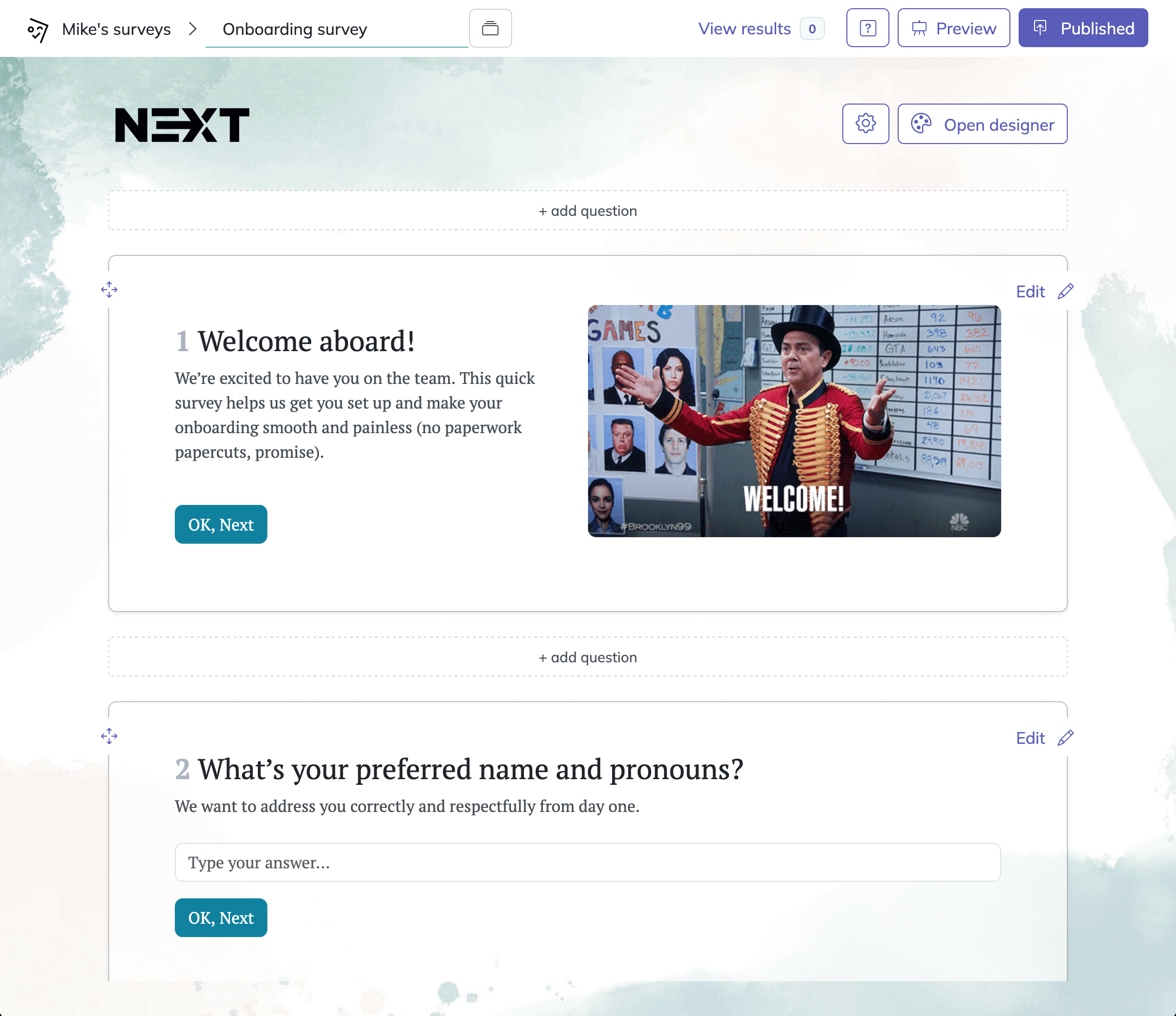
31 Retreat Survey Questions to Collect Actionable Feedback
Discover 26 essential retreat survey questions to gather actionable feedback before, during, and ...
